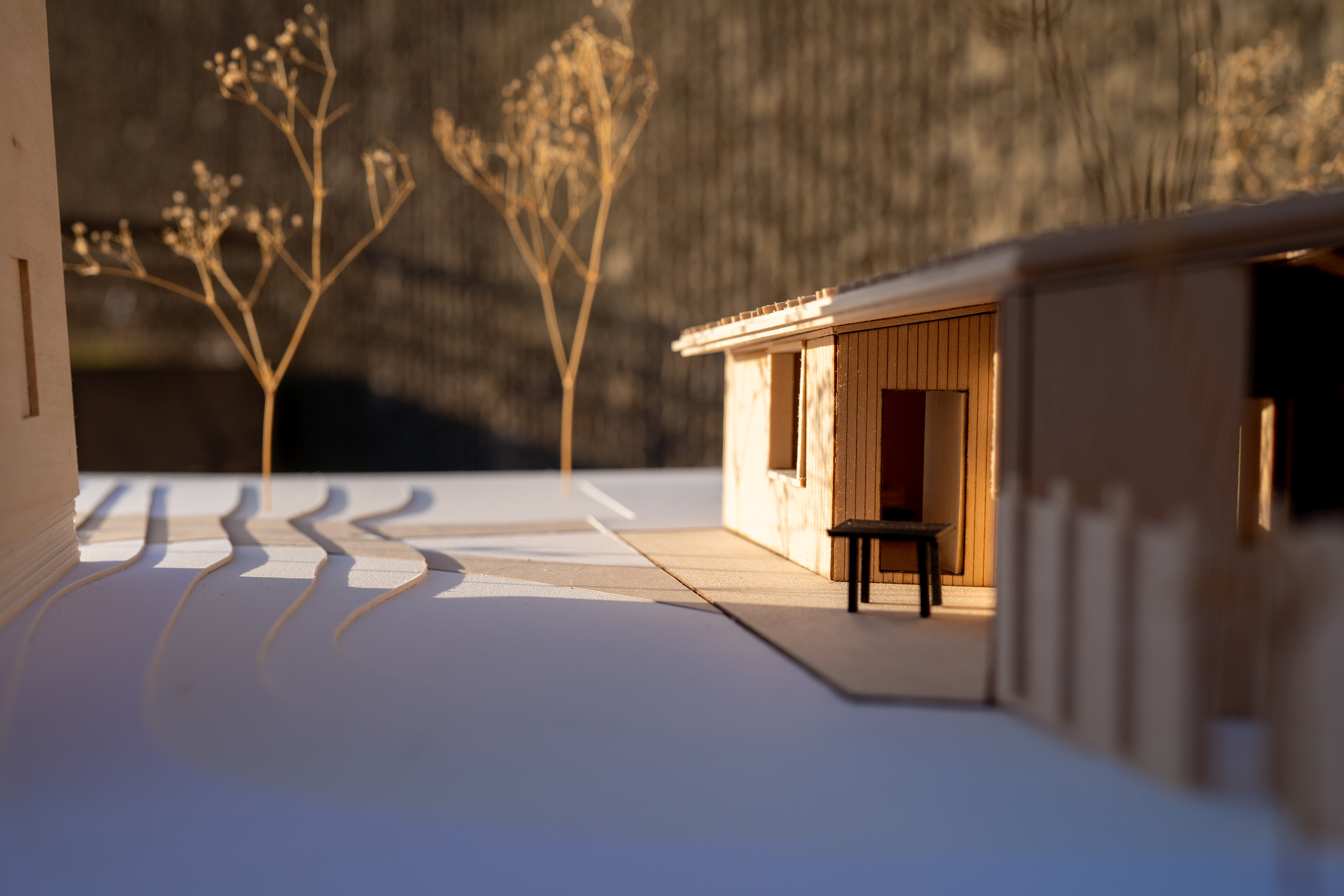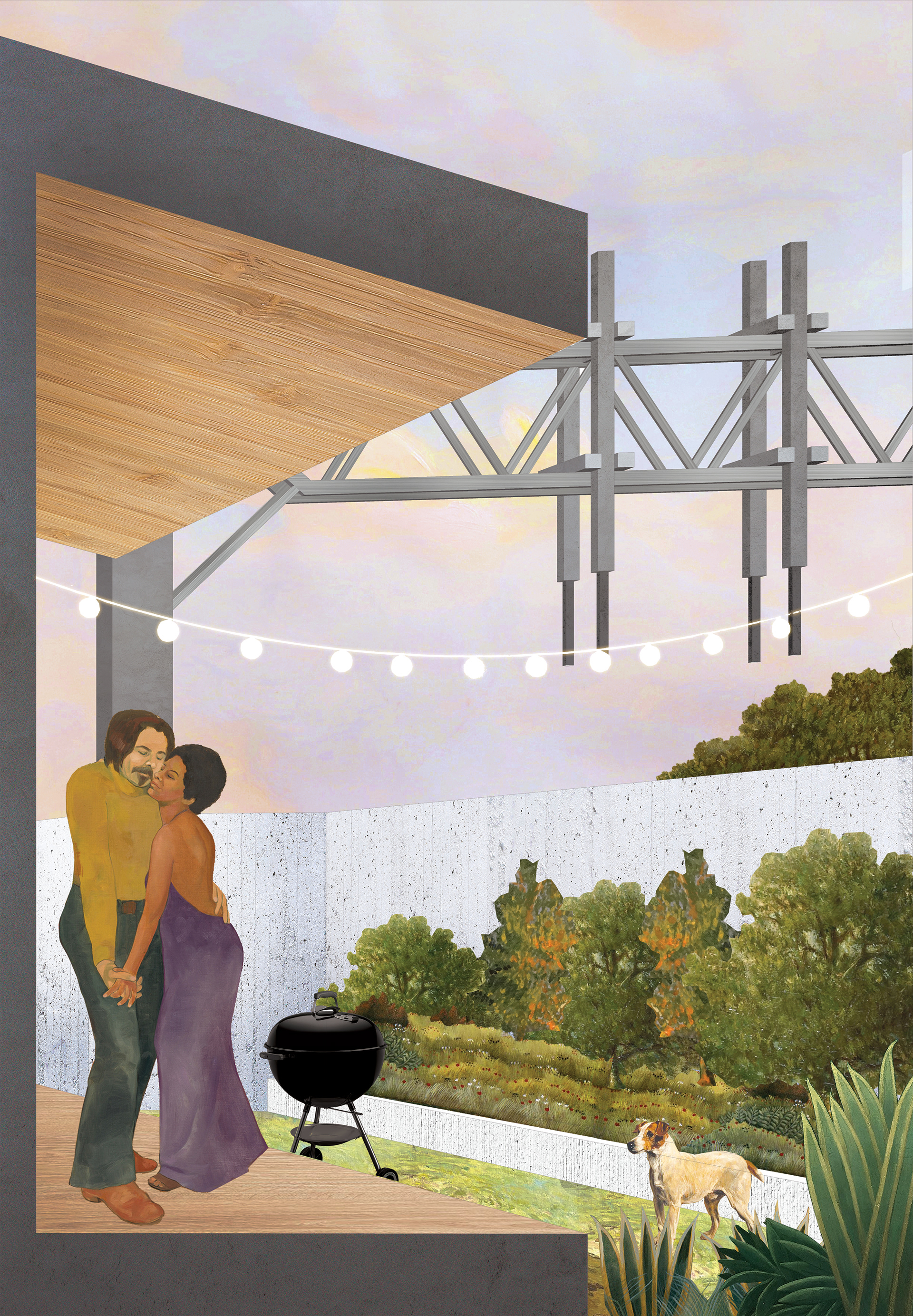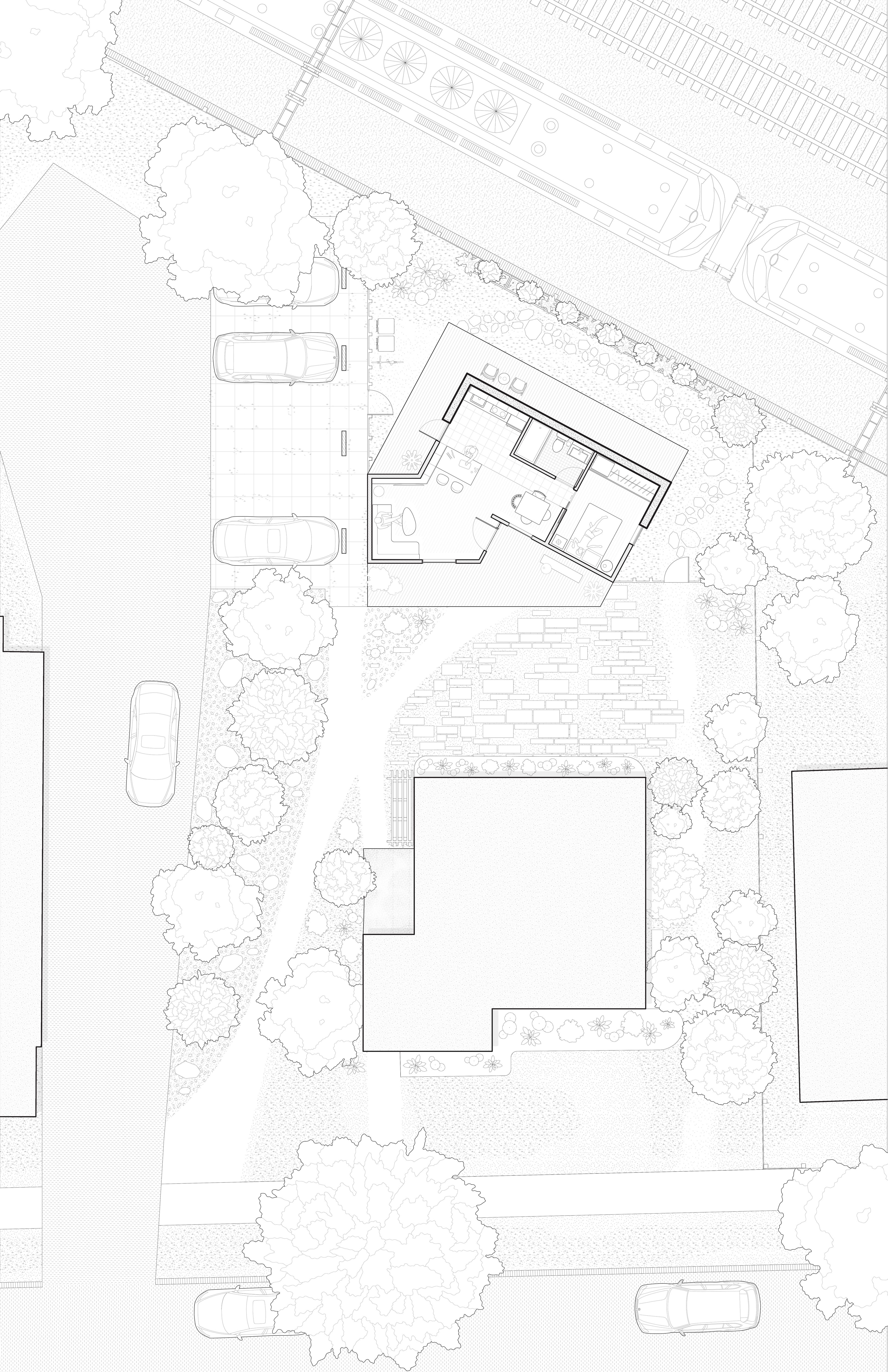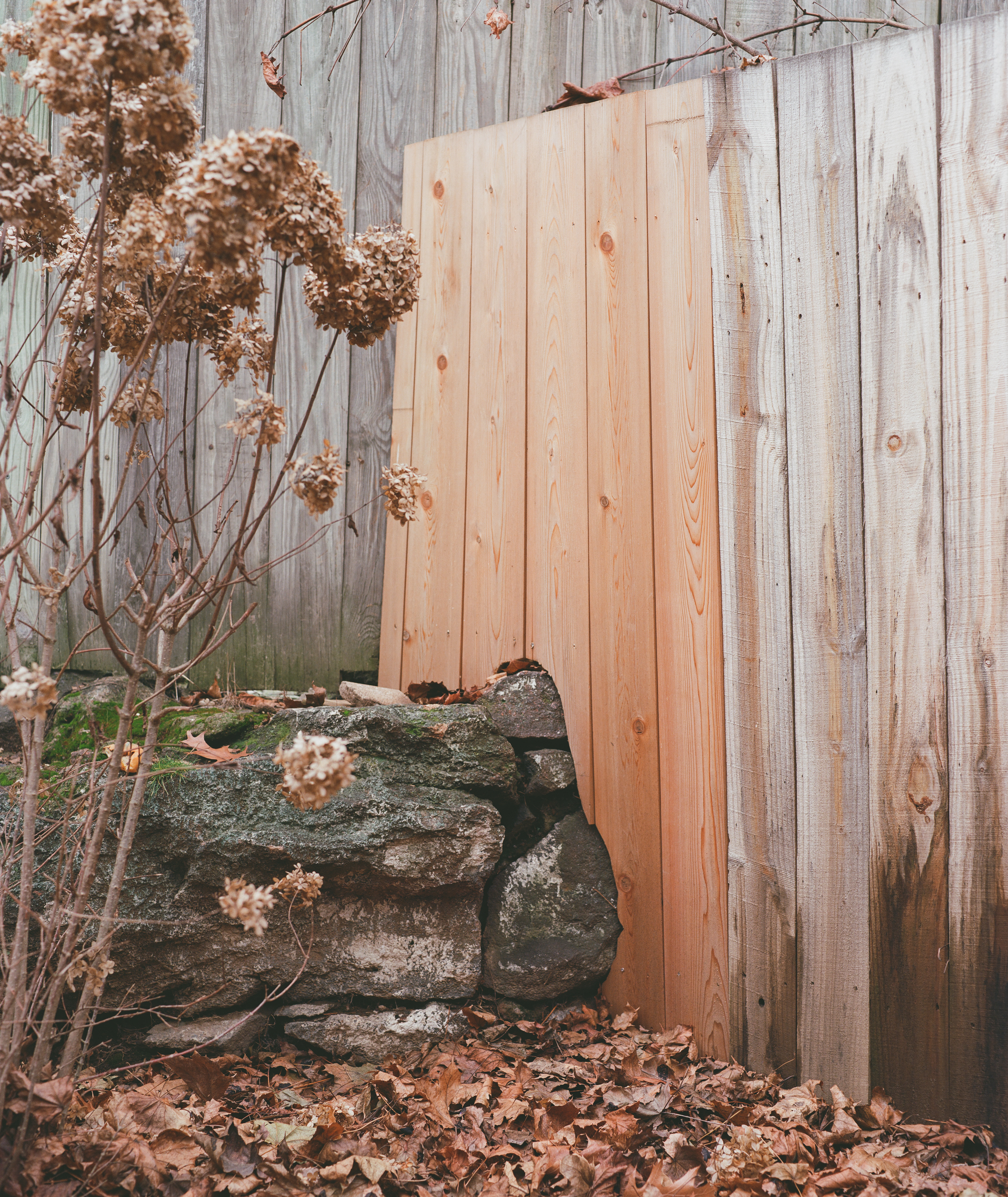Yale Building Project
In 2022, students at the Yale School of Architecture designed and built a 350sqft single-family residence in The Hill neighborhood of New Haven, in partnership with Columbus House: a local nonprofit dedicated to addressing homelessness in New Haven.












To better understand the needs of our target demographic, we conducted interviews with people experiencing homelessness, researched case-studies on ADU policy, and developed demographic analyses of local neighborhoods. Through group charettes, our group developed a design that maximized the utilization and perception of space while addressing key concerns voiced by potential users.
Drawing on professional experience in acoustical engineering, I designed the acoustic treatment of the building which was sited directly adjacent to an active railroad line. This involved adjusting the placement of windows, doors, and accessory spaces to protect and insulate critical spaces such as the bedroom from acoustic disturbance. We included features such as a central skylight to highlight the materials of the interior via the changing light. The backyard and intermediate space between the two buildings also served as gathering spaces for private and public encounters.
Over summer 2022, students poured concrete, erected timber framed walls, and collectively finished constructing the house









Instructors: Ming Thompsen, Bekka Sturges, Adam Hopfner
Term: Spring, Summer 2022
Role: Acoustic analysis, design, model making and photography
Team: Fany Kuzmova, Novera Momo, Sebastian Beaghan, Amelia Gates, Tong Hsu, Kevin Yang
Completed Building Photographs: Brandon Lim